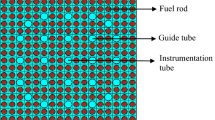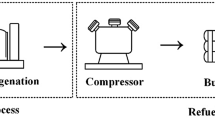Abstract
The purpose of this paper is to investigate the estimated people’s fatalities percentage due to methanol reactor incident from a newly proposed plant in Perak, Malaysia. This work investigated the possibility of (1) various events occurring in term of toxicity, thermal radiation, and overpressure, and (2) the fatalities percentage when these events occurred due to the release of chemical mixtures from the reference plant, which has 42 m3 reactor volume and operates at 76.4 bar; and three reactor scenarios in which the reactor volume is reduced to 7.6 m3, while operating pressures are 76.4, 150, and 300 bars. HYSYS software was employed to simulate the process and obtain the mass density of the mixture, mass fraction, and volume fraction, while ALOHA and MARPLOT software was used to calculate the amount of toxicity, thermal radiation, overpressure and area affected. The methanol reactor contains a mixture of hydrogen, carbon dioxide, methanol, carbon monoxide, and water, where only water is not considered hazardous. Release of chemical mixture via three-hole size scenarios, 10 mm, 25 mm, and 160 mm was proposed, and the simulation was carried out. Results showed that reference plant and plant 300 bar exhibit the highest fatalities percentage for overall and reduced reactor volume (15.7% and 11.2%), both caused from the release of carbon dioxide at night through a 160 mm hole leakage. This study can be used to suggest the best location for the methanol plant to be built to avoid any deaths to people living surrounding area.










Similar content being viewed by others
References
Aldridge T, Cruse H, Munday M, Roche N (2015) RR1055 Modelling the economic impacts of an accident at major hazard sites. UK Health and Safety Executive
Al-Saydeh SA, Zaidi SJ (2018) Carbon dioxide conversion to methanol: opportunities and fundamental challenges. Carbon Dioxide Chemistry, Capture and Oil Recovery, p 41
Bansode AB (2014) Exploiting high pressure advantages in catalytic hydrogenation of carbon dioxide to methanol, TDX (Tesis Dr. en Xarxa)
Barbarossa V, Vanga G, Viscardi R, Gattia DM (2014) CO2 as carbon source for fuel synthesis. Energy Procedia 45:1325–1329
Berghout N, van den Broek M, Faaij A (2013) Techno-economic performance and challenges of applying CO2 capture in the industry: a case study of five industrial plants. Int J Greenh Gas Control 17:259–279
Bergins C, Tran KC, Koytsoumpa EI, Kakaras E, Buddenberg T, Sigurbjörnsson Ó (2015) Power to methanol solutions for flexible and sustainable operations in power and process industries. Power-Gen Eur
Bernechea EJ, Arnaldos J (2014) Optimizing the design of storage facilities through the application of ISD and QRA. Process Saf Environ Prot 92(6):598–615
Bohnet M (2003) Ullmann’s encyclopedia of industrial chemistry. Wiley-Vch, Hoboken
Casal J (2017) Evaluation of the effects and consequences of major accidents in industrial plants. Elsevier, Amsterdam
Chakrabortty S, Nayak J, Pal P, Kumar R, Banerjee S, Mondal PK, Pal M, Ruj B (2020) Catalytic conversion of CO2 to biofuel (methanol) and downstream separation in membrane-integrated photoreactor system under suitable conditions. Int J Hydrog Energy 45(1):675–690
Crowl DA, Louvar JF (2019) Chemical process safety: fundamentals with applications, 4th. edn. Pearson Education
Di Domenico J, Vaz CA Jr, de Souza Jr MB (2014) Quantitative risk assessment integrated with process simulator for a new technology of methanol production plant using recycled CO2. J Hazard Mater 274:164–172
Gaikwad R, Reymond H, Phongprueksathat N, von Rohr PR, Urakawa A (2020) From CO or CO2? Space-resolved insights into high-pressure CO2 hydrogenation to methanol over Cu/ZnO/Al2O3. Catal Sci Technol 10(9):2763–2768
Gaikwad R (2018) Carbon dioxide to methanol: stoichiometric catalytic hydrogenation under high pressure conditions (Doctoral dissertation, Universitat Rovira i Virgili)
Grossel SS (2004) Guidelines for facility siting and layout-Center for Chemical Process Safety of the AIChE (CCPS/AIChE), New York, NY, 2003. J Loss Prev Process Ind 5(17):385–386
Hawthorne W, Weddell D, Hottel H (1949) Mixing and combustion in turbulent gas jets. Combustion 3:266
Heikkilä AM (1999) Inherent safety in process plant design. VTT Publ, pp1–132
Hobson C, Márquez C (2018) Renewable methanol report. Methanol Institute, Washington
Hymes I (1983) The physiological and pathological effects of thermal radiation, SRD R275. Energy Authority, Culcheth, UK
Jones R, Lehr W, Simecek-Beatty D, Reynolds M (2013) ALOHA®(Areal Locations of Hazardous Atmospheres) 5.4. 4: Technical Documentation
Meunier N, Chauvy R, Mouhoubi S, Thomas D, De Weireld G (2020) Alternative production of methanol from industrial CO2. Renew Energy 146:1192–1203
Ott J, Gronemann V, Pontzen F, Fiedler E, Grossmann G, Kersebohm D, et al. (2012) Ullmann’s encyclopedia of industrial chemistry. Germany: Wiley-VCH; [Methanol chapter]
Pérez-Fortes M, Schöneberger JC, Boulamanti A, Tzimas E (2016) Methanol synthesis using captured CO 2 as raw material: techno-economic and environmental assessment. Appl Energy 161:718–732
Previtali D, Longhi M, Galli F, Di Michele A, Manenti F, Signoretto M, Menegazzo F, Pirola C (2020) Low pressure conversion of CO2 to methanol over Cu/Zn/Al catalysts. The effect of Mg, Ca and Sr as basic promoters. Fuel 274:117804
Rivarolo M, Bellotti D, Magistri L, Massardo AF (2016) Feasibility study of methanol production from different renewable sources and thermo-economic analysis. Int J Hydrogen Energy 41(4):2105–2116
Rivera-Tinoco R, Farran M, Bouallou C, Auprêtre F, Valentin S, Millet P, Ngameni JR (2016) Investigation of power-to-methanol processes coupling electrolytic hydrogen production and catalytic CO2 reduction. Int J Hydrogen Energy 41(8):4546–4559
Roberts AF (1981) Thermal radiation hazards from release of LPG from pressurized storage. Fire Saf J 4:197–212
Saint Akadiri S, Alola AA, Olasehinde-Williams G, Etokakpan MU (2020) The role of electricity consumption, globalization and economic growth in carbon dioxide emissions and its implications for environmental sustainability targets. Sci Total Environ 708:134653
Srinivasan R, Nhan NT (2008) A statistical approach for evaluating inherent benign-ness of chemical process routes in early design stages. Process Saf Environ Prot 86(3):163–174
Stoffen PG (2005) Guidelines for quantitative risk assessment. Minist. van Volkshuisv. Ruimtelijke Ordening en Milieu. CPR E 18
Tidona B, Koppold C, Bansode A, Urakawa A, Rudolf Von Rohr P (2013) CO2 hydrogenation to methanol at pressures up to 950 bar. J Supercrit Fluids 78, 70–77
Urakawa A, Bansode A, Gaikwad RV, Institut Catala dInvestigacio Quimica ICIQ (2020) Methanol production process. U.S. Patent Application 15/998,895
Van den Bosch CJH, Weterings RAPM (2005) Methods for the calculation of physical effects. Committee for the Prevention of Disasters, CPR E, 14
Van Der Ham LGJ, Van Den Berg H, Benneker A, Simmelink G, Timmer J, Van Weerden S (2012) Hydrogenation of carbon dioxide for methanol production. Chem Eng Trans 29(3):181–186
Van-Dal ÉS, Bouallou C (2013) Design and simulation of a methanol production plant from CO2 hydrogenation. J Clean Prod 57:38–45
Acknowledgements
The authors 1 and 2 would like to acknowledge Faculty of Chemical Engineering, Universiti Teknologi MARA (UiTM) and the Ministry of Education (MOE) for the 600-RMI/FRGS/5/3 (0094/2016) grant, for all the funding and support given in establishing this project. Mohanad El-Harbawi would like also to thank the Deanship of Scientific Research at King Saud University for supporting him through research group no. RGP-303.
Author information
Authors and Affiliations
Corresponding author
Ethics declarations
Conflict of interest
The authors declare that they have no conflicts of interest.
Additional information
Editorial responsibility: Binbin Huang.
Supplementary Information
Below is the link to the electronic supplementary material.
Rights and permissions
About this article
Cite this article
Ahmad, M.A., A. Rashid, Z., El-Harbawi, M. et al. High-pressure methanol synthesis case study: safety and environmental impact assessment using consequence analysis. Int. J. Environ. Sci. Technol. 19, 8555–8572 (2022). https://doi.org/10.1007/s13762-021-03724-1
Received:
Revised:
Accepted:
Published:
Issue Date:
DOI: https://doi.org/10.1007/s13762-021-03724-1




